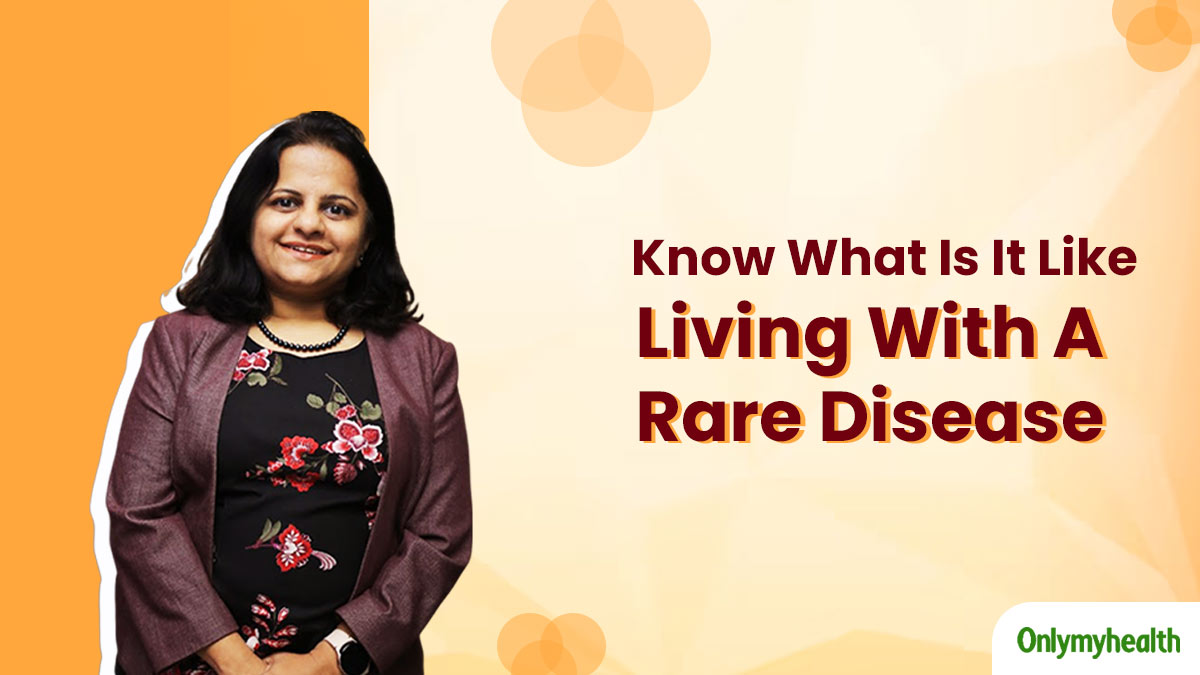
“Abhi kaunsa haddi tutta hain?” Which bone have you broken now?
These were the words through which the security guard welcomed Parita at an Orthopaedic clinic. This was just one of the disheartening remarks she was used to hearing often owing to her condition Osteogenesis Imperfecta that causes brittle bones. She was always either at home or at the hospital. Speaking about her early life, Parita was born as a blue baby with only 24 hours to live but she fought it out and is leading a successful life as a health communicator. With an aim to raise awareness about this rare condition, we have documented her story. Spare your two minutes to read this to understand what it is like living with a rare genetic disease.
Table of Content:-
How It All Began?
When Parita was three years old, she suffered her first fracture; thereafter, even the smallest falls led to broken bones. Upon examining, doctors found out about her condition.“I must have broken my bones a dozen times so far! I once shattered a bone while I was sleeping. In the absence of a definitive diagnostic test at the time, looking at my blue sclera and frequency of fractures my doctor concluded that I have Osteogenesis Imperfecta, a condition that causes brittle bones,” shares Parita recalling her first encounter with OI.

What is Osteogenesis Imperfecta?
Let us take a pause from her story and first understand what Osteogenesis Imperfecta is. In medical language, Osteogenesis Imperfecta (OI) is a genetic or heritable disease when one’s bones break easily. It is one of the tens of thousands of illnesses that fall under the category of ‘rare diseases’. With genetic counselling and testing, detection and diagnosis of OI has improved over the years but there is no way to prevent the disease.
How would someone find out if they have OI?
There are typically no symptoms for one to predict OI. While any one can be born with OI, people with a family history are at a greater risk of inheriting it. There are several types of OI and classification is dependent on the severity of the disease or the nature of the underlying gene defect. Parita probably had Type I – the mildest type.
According to a case study published in NCBI, OI is rare(1 case in every 20,000) and while it can affect people of all races and ethnicities, most cases are reported in blacks.
Life with Osteogenesis Imperfecta
Coming back to Parita’s struggles, she was bedridden for a good 4-5 months after every fracture! Imagine a child who is mostly home with no friends to spend time with, let alone play. Over time, she started living a normal life which included attending school too. However, the ‘Disabled’ tag followed her everywhere. Recalling one such incident, Parita shares, “I remember in 10th standard while filling the SSC Board forms my principal had called me to the staff room and asked if I would like to file my name in the “disabled” category. My immediate reaction was a "NO"! Not because of the negative connotations associated with the term, but rather because my parents and extended family had never treated me differently or forced me to accept that there are some things I am unable to accomplish.”
Hearing loss journey
But as they say – chronic conditions stay with you forever. Parita was unaware of the challenges that were coming her way. OI again crept into her life in the form of ‘progressive’ hearing loss. She and her family were warned that in some cases OI does manifest later in life in the form of hearing loss.
After heaps of ear doctor visits, surgeries, a string of hearing aids, and countless audiograms, just when the world was dealing with the damages of Covid, she stepped into the world of deaf from being a hard of hearing individual.”
In this OI journey of 30+ years, her progressive hearing loss has occupied 20 years so far!

Life learning
Currently, she is recalibrating her life as a late-deafened adult. For a disabling condition that comes later in life, it is much more difficult and challenging to adapt to the new status. Late-disabled have to go through considerable changes in their lives; the grieving, the identity change, the psychosocial adjustments.
Parita was using hearing aids for more than a decade, but due to the progressive and unique nature of her hearing loss, no technology (hearing aids or cochlear implant) is now helping her. So, he has shifted her use of technology from almost invisible wearables to visible apps and more. For day-to-day conversation, Parita rely on mobile apps that show real-time captions and utilise all workplace offerings (online meeting platforms with live caption, emails, chats) that help perform the job based on written words. As a strong proponent and use case of tech-enabled lives, increasing awareness around accessibility has become her new motto!
Takeaway
Reach out and seek help on time – even hearing a story from someone who has had experiences similar to you can make you realise that you are not alone. Look for kinship and communities nearby that can help you understand your situation if you or a loved one has OI or another similar chronic condition. The Internet has been a boon in helping make the world flat, and even for rare conditions such as OI we find a considerable number of people across the world offering support, stories, and kindness.
Also watch this video
How we keep this article up to date:
We work with experts and keep a close eye on the latest in health and wellness. Whenever there is a new research or helpful information, we update our articles with accurate and useful advice.
Current Version